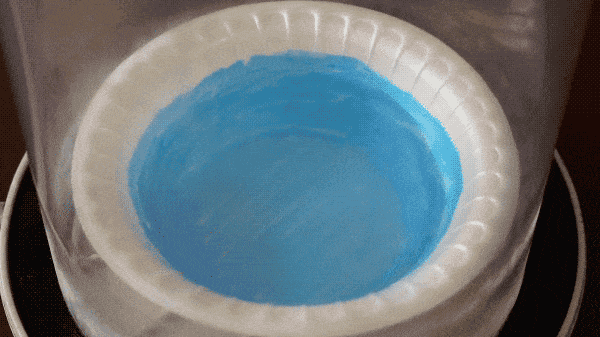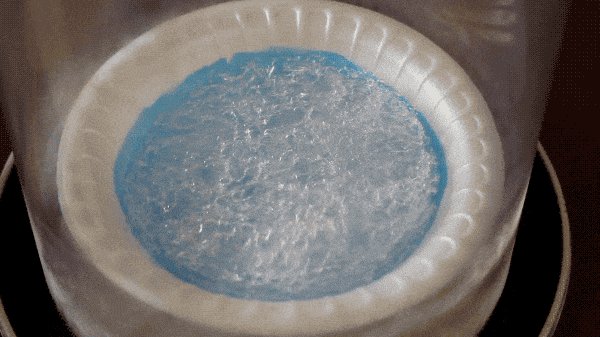
Liquid nitrogen is super cold, -320 degrees Fahrenheit, but what if we could cool it down further or even freeze it into nitrogen ice? Watch this video and read more to find out!

The solution lies in a summer day at the pool, sweat, or at least something tying them: evaporative cooling. When you get out of a pool and the water evaporates off of you, it is actually taking heat away from you because evaporation is something called an endothermic process, or something that takes heat energy away from a system. That’s actually the entire point of sweating; your sweat evaporates, cooling your skin.
Now, liquid nitrogen boils and evaporates at room temperature, but that process is too slow to cool it enough to freeze. We need to use evaporative cooling to bring it down from -320 to -346 degrees Fahrenheit, which means we need a lot more evaporation in a shorter period of time. For this, we turn to our vacuum chamber.
Inside the vacuum chamber, air pressure is dropping to nearly zero, so the liquid nitrogen boils away faster due to the ideal gas law. When pressure of a system decreases but temperature remains the same, volume must increase; this means more liquid is transitioning to the higher-volume gas. As the liquid nitrogen boils away faster and faster, it cools down the remaining liquid nitrogen until it eventually reaches the freezing point of -346.

This solid nitrogen can’t stay, however. Once we equalize pressure inside the vacuum chamber with the outside, it reverts back to its liquid state. This method of producing solid nitrogen is actually the primary way of creating it in laboratories here on Earth. Out in space, solid nitrogen can be found on the surface of Pluto and Triton, one of Neptune’s moons.

Written by: Miles Hensley


